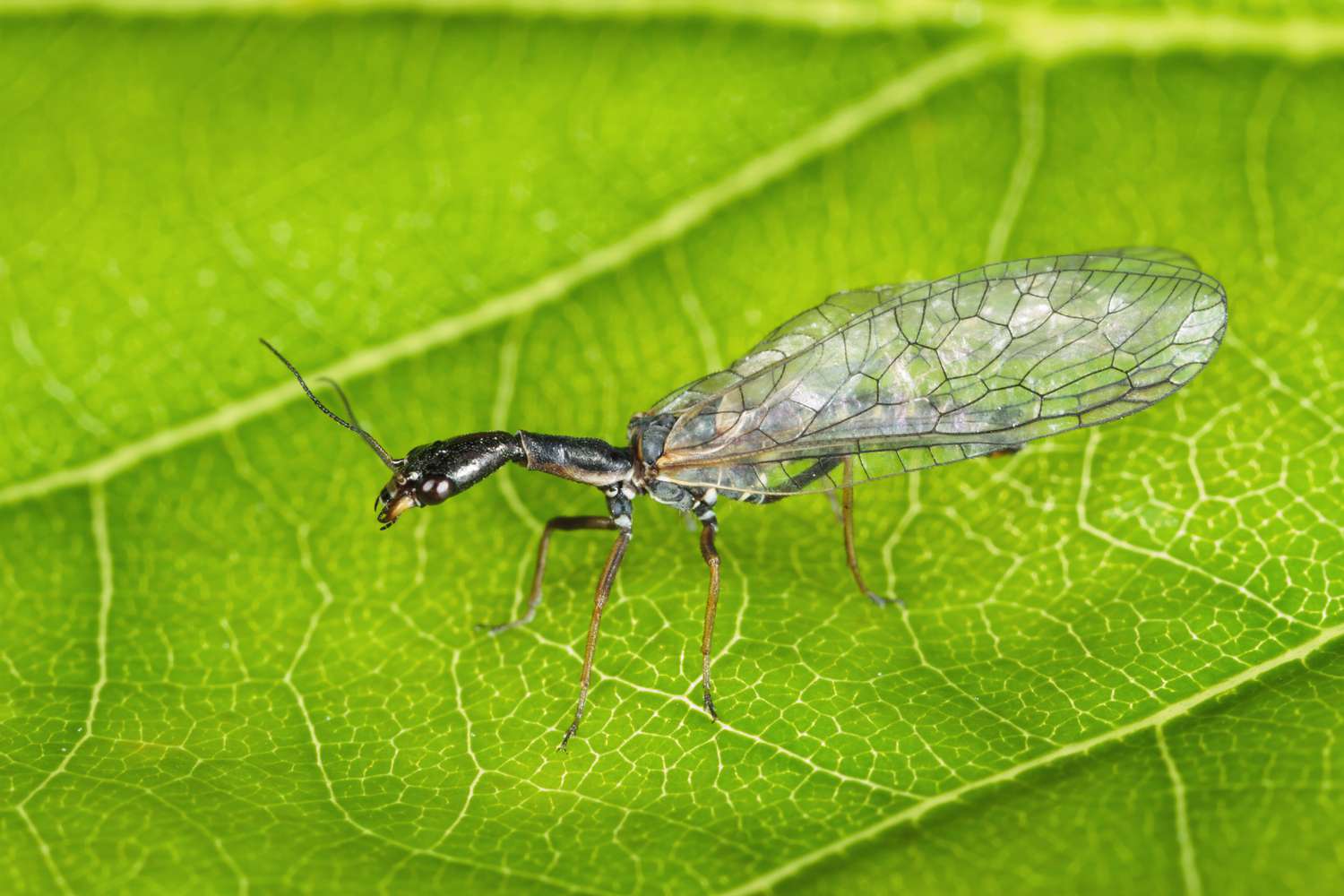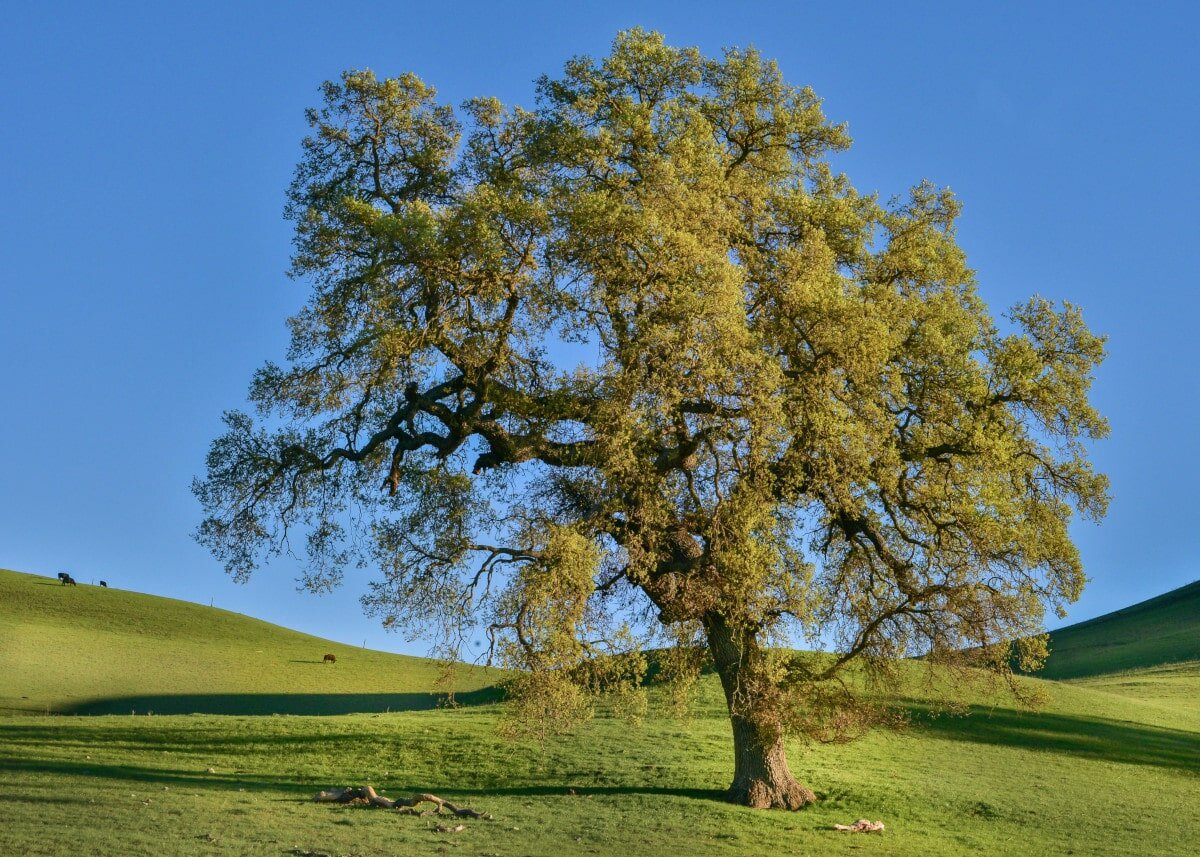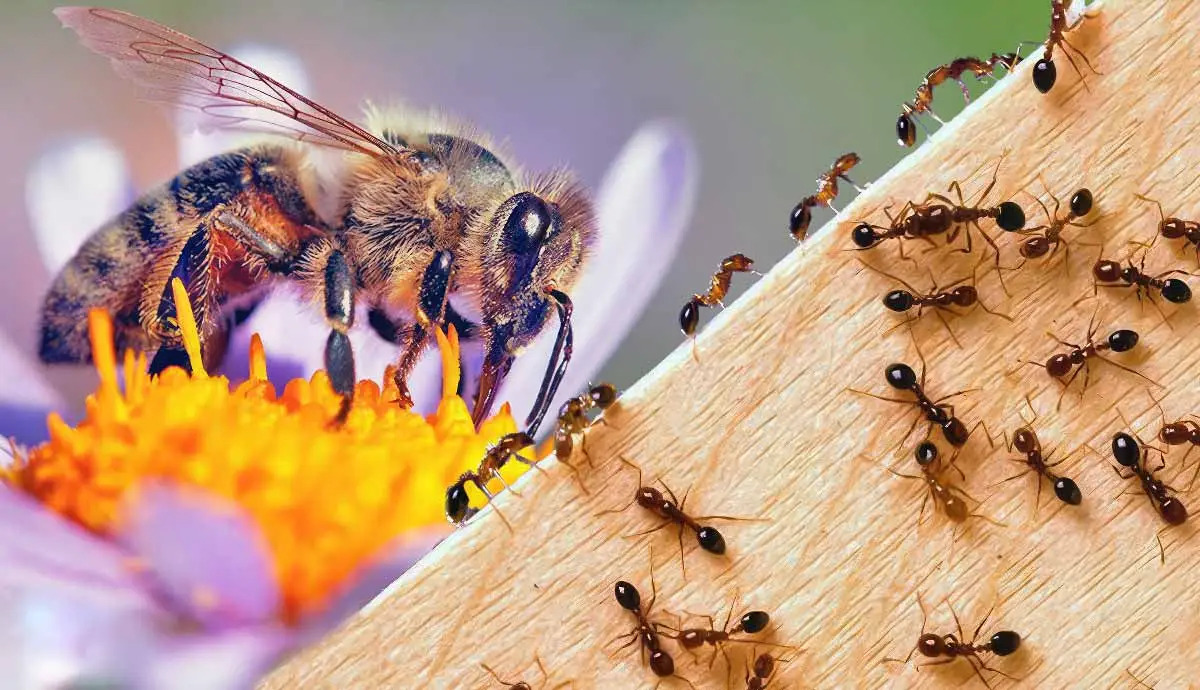Home>Gardening Tips and Tricks>Eco-Friendly Gardening>How Many Zones Are Used In Permaculture?


Eco-Friendly Gardening
How Many Zones Are Used In Permaculture?
Published: February 16, 2024
Discover the secrets of eco-friendly gardening with permaculture. Learn how many zones are used in this sustainable gardening method and create your own thriving paradise.
(Many of the links in this article redirect to a specific reviewed product. Your purchase of these products through affiliate links helps to generate commission for Chicagolandgardening.com, at no extra cost. Learn more)
Table of Contents
Introduction
Welcome to the world of permaculture, where sustainable gardening practices go hand-in-hand with environmental consciousness. Permaculture is a philosophy and approach to gardening that aims to create a harmonious and self-sustaining ecosystem. At the heart of permaculture lies the concept of zones, which help organize and optimize the use of space in an eco-friendly garden.
In permaculture, zones are classified based on their proximity to the central living area. Each zone is designed to serve a specific purpose, with the ultimate goal of maximizing efficiency and minimizing the need for external inputs. By understanding the principles and layout of these zones, gardeners can create a resilient and regenerative landscape that benefits both humans and the natural environment.
The use of zones in permaculture provides a strategic framework for gardening activities, ensuring that plants, animals, and resources are placed in the most appropriate locations. This zoning system takes into account factors such as accessibility, frequency of use, and energy requirements, allowing for a well-planned and efficient garden design.
Zone 0: The Home
Zone 0 is the heart of the permaculture system and represents the home or central living area. In this zone, the focus is on creating sustainable and eco-friendly practices within the immediate vicinity of the house. This zone incorporates elements such as vegetable gardens, herb gardens, and small-scale livestock systems.
Within Zone 0, one can find activities like composting, rainwater harvesting, and renewable energy solutions, all geared towards reducing waste and energy consumption. The integration of these practices not only provides a source of fresh and healthy food but also contributes to a more sustainable lifestyle.
Zone 0 is also an excellent opportunity to practice self-sufficiency by growing edibles in a kitchen garden or cultivating herbs for medicinal purposes. By having these resources readily available, gardening enthusiasts can reduce their reliance on store-bought produce and pharmaceuticals, while also fostering a deeper connection to nature.
Another critical aspect of Zone 0 is waste management. Composting systems, such as worm bins or traditional compost piles, can be set up in this zone to process food scraps and garden waste. This organic matter can then be used to enrich the soil in other zones, completing the circle of sustainability.
By establishing Zone 0 as a hub for sustainable practices, permaculture gardeners can create a self-sustaining ecosystem that brings together the benefits of food production, waste management, and energy efficiency all within reach of their own homes.
Zone 1: Immediate Surroundings
In permaculture, Zone 1 is the area closest to the home and is often referred to as the immediate surroundings or the intensive garden. This zone consists of spaces that are visited frequently and require regular maintenance and attention.
In Zone 1, the focus is on growing high-value and frequently used plants, such as culinary herbs, salad greens, and small fruiting trees. These plants are typically chosen for their proximity to the house, making it convenient for daily harvesting and care. The goal is to have a readily available and constantly replenished supply of fresh produce right at your doorstep.
Accessibility is key in this zone, as it allows for easy maintenance and regular observation. By keeping this area well-organized and efficient, gardeners can ensure a healthy and productive garden with minimal effort.
Zone 1 also provides an opportunity to incorporate beneficial companion planting and symbiotic relationships. By interplanting compatible species or utilizing natural pest control methods, such as attracting beneficial insects or using companion plants to repel pests, gardeners can create a balanced and thriving ecosystem within this close proximity to the home.
Furthermore, Zone 1 can include elements such as small-scale compost bins, rainwater collection systems, and vertical gardening structures. These additions not only optimize the use of space but also contribute to water conservation and nutrient recycling.
By designating Zone 1 as an area of intense cultivation and immediate accessibility, permaculture gardeners can have a bountiful harvest just steps away from their kitchen, while also fostering a connection to the natural world and promoting self-sufficiency.
Zone 2: Productive Garden and Small Livestock
Zone 2 in permaculture refers to the productive garden and small livestock area. This zone extends beyond Zone 1 and encompasses spaces that require less frequent attention but still play a vital role in the overall design of the permaculture system.
In Zone 2, the focus shifts towards growing perennial crops, larger vegetables, and orchard trees. These plants require more space and longer growing seasons, making them suitable for areas that are slightly farther from the home. Zone 2 is often characterized by larger garden beds, fruit orchards, and vineyards.
In addition to plant cultivation, Zone 2 may also incorporate small livestock systems such as chicken coops, beehives, or rabbit hutches. These animals provide valuable resources such as eggs, honey, and manure for composting, further enhancing the self-sufficiency and productivity of the permaculture garden.
Zone 2 allows for a diverse range of crops and livestock, creating a balanced and resilient ecosystem. Companion planting and intercropping techniques can be utilized to maximize yields and minimize the risk of pests and diseases. By carefully selecting plant combinations, gardeners can encourage mutual benefits, such as pest control or improved soil fertility.
Furthermore, Zone 2 is a suitable space to experiment with alternative growing methods and sustainable practices. Techniques such as raised beds, no-till gardening, and agroforestry can be implemented to promote soil health and biodiversity. Implementing water-saving strategies like drip irrigation or swales can also help conserve precious resources while maintaining plant health.
Zone 2 acts as a transition between the more intensive Zone 1 and the broader, less managed zones. It provides a balance between productivity, diversity, and ease of management, allowing gardeners to enjoy a wide range of crops and the benefits of small-scale animal husbandry.
Zone 3: Large-Scale Agriculture
Zone 3 in permaculture refers to the area of large-scale agriculture. This zone extends beyond Zone 2 and is dedicated to growing crops that require less frequent maintenance and do not need daily attention.
In Zone 3, the focus shifts towards staple food crops, cash crops, and agricultural practices that require more space and effort. This zone typically includes fields for growing grains, legumes, and other long-season crops.
Large-scale agriculture in Zone 3 often involves practices such as crop rotation, cover cropping, and integrated pest management. By implementing these sustainable techniques, permaculture gardeners can improve soil fertility, reduce the risk of pests and diseases, and minimize the need for chemical inputs.
Zone 3 allows for a greater degree of mechanization, as larger areas and more substantial production volumes require efficient tools and equipment. However, it is important to prioritize sustainability and environmental responsibility when incorporating machinery into the permaculture system.
Permaculture principles can still be applied in Zone 3 by integrating perennial crops, windbreaks, and water conservation measures. By diversifying the crops and incorporating agroforestry techniques, gardeners can create a more resilient and ecologically balanced agricultural system.
Zone 3 is an opportunity to explore regenerative farming practices and promote food sovereignty by growing a variety of staple crops. This zone contributes to food security, as it provides a substantial amount of produce for consumption, preservation, and potential sale or barter.
Overall, Zone 3 showcases the scalability and efficiency of permaculture practices in larger agricultural settings. It highlights the importance of sustainable farming methods, while still considering the needs of the local ecosystem and community.
Zone 4: Wild Food Forests and Managed Woodlands
In permaculture, Zone 4 represents the area of wild food forests and managed woodlands. This zone extends beyond Zone 3 and is dedicated to cultivating and preserving native species, as well as providing habitats for wildlife.
Zone 4 is designed to mimic natural ecosystems, incorporating a diverse range of trees, shrubs, and understory plants. The focus shifts towards creating a self-regulating and self-sustaining ecosystem that requires minimal intervention.
Wild food forests are a key feature of Zone 4, providing an abundance of forageable foods such as nuts, berries, and edible greens. These forests are designed to be low-maintenance and high-yield, providing a source of food while preserving the ecological integrity of the area.
Managed woodlands in Zone 4 may include trees for timber production, non-timber forest products, and other sustainable forestry practices. By implementing selective harvesting, coppicing, or pollarding techniques, the woodland ecosystem can be managed while providing a renewable source of wood and other resources.
Zone 4 plays a vital role in creating biodiversity corridors, connecting different habitats and allowing wildlife to move freely between them. This zone attracts a variety of birds, insects, and mammals, contributing to ecosystem health and resilience.
By incorporating wildlife-friendly features such as nesting boxes, bee hotels, and water sources, permaculture gardeners can further enhance the habitat value of Zone 4. These additions not only support native species but also provide additional opportunities for observing and learning from the natural world.
Zone 4 serves as a reminder of the importance of embracing wildness and allowing nature to thrive. It encourages a different perspective on land management, focusing on the promotion of ecological diversity and the conservation of natural resources.
Zone 5: Wilderness
Zone 5 is the final zone in permaculture and is known as the wilderness or conservation area. Unlike the other zones, which are actively managed and cultivated, Zone 5 is left untouched and acts as a sanctuary for biodiversity and natural processes.
In Zone 5, nature is allowed to evolve and thrive without human interference. It serves as a refuge for indigenous plants, animals, and microorganisms, preserving and protecting their habitats. This untouched area provides a benchmark for comparison, allowing us to observe and learn from natural ecosystems.
Zone 5 plays a crucial role in promoting ecological balance and resilience. It harbors beneficial insects, soil microorganisms, and native pollinators, which contribute to the health and productivity of the entire permaculture system. This zone also helps prevent the spread of invasive species and supports the regeneration of native flora and fauna.
In addition to its ecological significance, Zone 5 offers recreational and educational opportunities. It provides a space for meditation, relaxation, and connection with the natural world. By spending time in this undisturbed wilderness, gardeners and visitors can deepen their understanding and appreciation of the intricate relationships between organisms and ecosystems.
Zone 5 also emphasizes the importance of land stewardship and responsible management. By consciously setting aside a portion of the property as a wilderness area, gardeners demonstrate a commitment to environmental ethics and long-term sustainability.
While Zone 5 may not directly contribute to food production or cultivation, its presence is essential for a holistic permaculture approach. It reminds us of the intrinsic value of nature and the need to preserve and protect it for future generations.
Conclusion
Permaculture gardening offers a holistic and sustainable approach to creating eco-friendly landscapes. The use of zones in permaculture enables gardeners to strategically organize their spaces, optimizing efficiency and creating a harmonious relationship between humans and the natural environment.
From Zone 0, where sustainable practices are implemented within the home and immediate surroundings, to Zone 1, which focuses on intensive cultivation and accessibility, each zone plays a unique role in the permaculture design.
Zone 2 expands the garden’s productivity with larger-scale crops and small livestock, while Zone 3 embraces large-scale agriculture techniques to meet the demands for staple and cash crops. Zone 4 showcases the value of wild food forests and managed woodlands, providing a haven for native species and sustainable forestry practices. Lastly, Zone 5 reminds us of the importance of preserving untouched wilderness, promoting biodiversity and ecological balance.
By understanding the principles of permaculture zones and incorporating them into our gardening practices, we can create thriving ecosystems that not only provide us with nourishing food but also support environmental health and resilience.
Permaculture gardening is a journey of observation, adaptation, and continuous learning. It encourages us to work with, rather than against, nature’s inherent wisdom. By harnessing the power of zones and integrating sustainable practices, we can create beautiful and abundant gardens that contribute positively to the health of our planet.
So, let’s embrace permaculture principles and embark on a journey towards a more sustainable and eco-friendly approach to gardening. Together, we can create a greener and healthier future for ourselves and generations to come.



